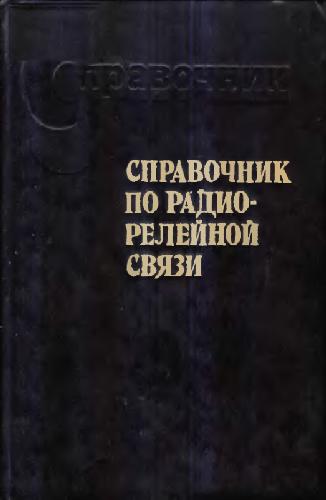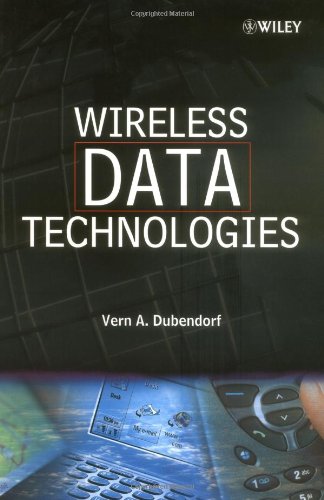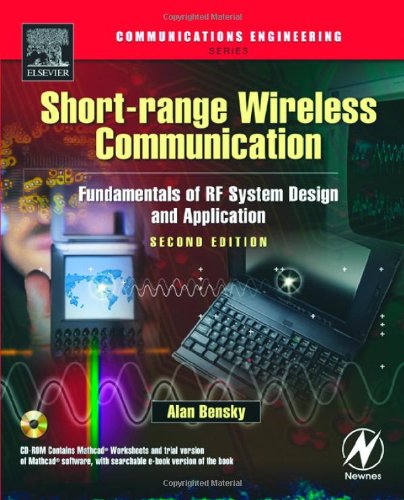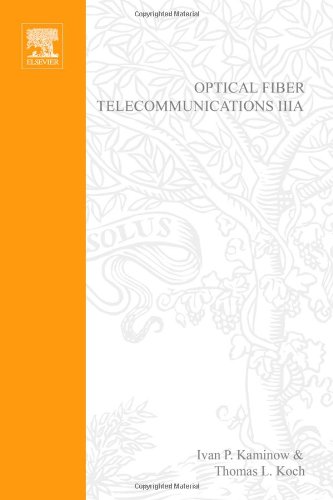Harry R. Anderson9780470844380, 0470844388
Table of contents :
Cover……Page 1
Contents……Page 6
Preface……Page 18
1.1 INTRODUCTION……Page 20
1.2 EVOLUTION OF WIRELESS SYSTEMS……Page 21
1.3 MODELS FOR WIRELESS SYSTEM DESIGN……Page 23
1.4 DEMAND FOR COMMUNICATION SERVICES……Page 26
1.5 LICENSED FREQUENCY BANDS……Page 27
1.6 LICENSE- EXEMPT BANDS……Page 29
1.7 TECHNICAL STANDARDS……Page 31
1.7.1 IEEE 802.11 standards……Page 32
1.7.3 ETSI BRAN standards……Page 33
1.8 FIXED, PORTABLE, AND MOBILE TERMINALS……Page 34
1.9.2 Consecutive point and mesh networks……Page 36
1.9.3 Point- to- multipoint ( PMP) networks……Page 37
1.9.4 NLOS point- to- multipoint networks……Page 38
1.10 ORGANIZATION OF THIS BOOK……Page 39
1.11 FUTURE DIRECTIONS IN FIXED BROADBAND WIRELESS……Page 41
1.13 REFERENCES……Page 42
2.2 MAXWELL’S EQUATIONS AND WAVE EQUATIONS……Page 44
2.3 PLANE AND SPHERICAL WAVES……Page 46
2.3.1 Impedance of free space and other transmission media……Page 47
2.3.3 Spherical waves……Page 48
2.4 LINEAR, CIRCULAR, ELLIPTICAL, AND ORTHOGONAL POLARIZATIONS……Page 49
2.5.1 Path attenuation between two antennas……Page 50
2.5.2 Field strength at a distance……Page 51
2.6.1 Specular re . ection……Page 52
2.6.2 Physical optics……Page 54
2.6.3 Re . ections from rough surfaces……Page 56
2.7.1 Wedge Diffraction……Page 59
2.7.2 Knife- edge diffraction……Page 64
2.8 FRESNEL ZONES AND PATH CLEARANCE……Page 70
2.9 MATERIAL TRANSMISSION……Page 72
2.9.2 Transmission through foliage……Page 73
2.10 ATMOSPHERIC REFRACTION……Page 75
2.10.1 Statistics of varying refractivity gradients……Page 78
2.10.3 Super- refraction and ducting……Page 80
2.12 RAIN ATTENUATION AND DEPOLARIZATION……Page 81
2.13 FREE- SPACE OPTICS ( FSO) PROPAGATION……Page 84
2.13.1 Beam divergence……Page 85
2.13.3 Atmospheric scintillation……Page 86
2.15 REFERENCES……Page 87
3.1 INTRODUCTION……Page 90
3.1.1 Model classi . cations……Page 91
3.2 THEORETICAL, EMPIRICAL, AND PHYSICAL MODELS……Page 92
3.2.1 Theoretical channel models……Page 93
3.2.2 Empirical channel models……Page 94
3.2.3 Physical channel models……Page 97
3.3 GENERIC WIDEBAND CHANNEL MODEL……Page 98
3.3.1 Wideband channel response……Page 102
3.4 EMPIRICAL MODELS……Page 108
3.4.1 IEEE 802.16 ( SUI) models……Page 109
3.4.2 COST- 231 Hata model……Page 112
3.4.3 MMDS band empirical path loss……Page 113
3.4.4 3D path loss surface models……Page 115
3.5 PHYSICAL MODELS……Page 116
3.5.1 Free space + RMD……Page 117
3.5.2 Multiple obstacle analysis……Page 121
3.5.5 Anderson 2D model……Page 126
3.5.6 NLOS dominant ray path loss model……Page 127
3.5.7 Ray- tracing……Page 134
3.5.8 Simpli . ed indoor model……Page 139
3.6 CONCLUSIONS……Page 141
3.7 REFERENCES……Page 142
4.1 INTRODUCTION……Page 146
4.1.1 Link performance with fading……Page 147
4.2 ATMOSPHERIC FADING MODELS……Page 148
4.2.1 Microwave multipath fading mechanisms……Page 149
4.2.2 Vigants ¨C Barnett model……Page 151
4.2.3 ITU- R P. 530- 8 model……Page 153
4.2.4 Dispersive ( frequency- selective) fading……Page 156
4.3 RAIN FADING MODELS……Page 162
4.3.1 Crane rain fade model……Page 163
4.3.2 ITU- R P. 530- 8 model……Page 165
4.3.3 Short- range rain fading……Page 166
4.3.5 Cross- polarization discrimination fading model……Page 168
4.4 CORRELATED RAIN FADING MODEL……Page 170
4.5 FREE SPACE OPTICS FOG FADING MODELS……Page 171
4.6 FADING MODELS FOR NLOS LINKS……Page 172
4.6.1 NLOS multipath fading models……Page 173
4.6.2 NLOS shadow fading models……Page 179
4.6.3 Composite fading ¨C shadowing distributions……Page 180
4.7 CONCLUSION……Page 181
4.8 REFERENCES……Page 182
5.1 INTRODUCTION……Page 184
5.2.1 Topographic maps……Page 185
5.2.2 Terrain DEMs……Page 186
5.2.3 DEM data from satellite and aerial imagery……Page 188
5.3 BUILDINGS AND OTHER STRUCTURES……Page 190
5.3.1 Vector building databases……Page 191
5.3.2 Canopy building databases……Page 192
5.3.3 System analysis errors from using canopy databases……Page 194
OR CLUTTER)……Page 197
5.5 ATMOSPHERIC AND METEOROLOGY FACTORS……Page 198
5.5.2 Rain rates……Page 199
5.6 MOBILE ELEMENTS OF THE PROPAGATION ENVIRONMENT……Page 200
5.7 MAPPING FUNDAMENTALS……Page 201
5.7.2 Geodetic systems, datums, and datum transformations……Page 202
5.7.3 Map projections……Page 205
5.8 CONCLUSIONS……Page 206
5.9 REFERENCES……Page 207
6.1 INTRODUCTION……Page 208
6.2 ANTENNA SYSTEM FUNDAMENTALS……Page 209
6.2.1 Radiation from an elemental dipole antenna……Page 211
6.2.2 Directivity and gain……Page 213
6.2.3 Antenna radiation patterns……Page 214
6.2.4 Polarization……Page 216
6.2.5 Antenna ef . ciency and bandwidth……Page 218
6.2.6 Electrical beamtilt, mechanical beamtilt, and null . ll……Page 220
6.3 FIXED NARROW BEAM ANTENNAS……Page 221
6.3.1 Horn antennas……Page 222
6.3.2 Parabolic and other re . ector antennas……Page 224
6.4 FIXED BROAD BEAM ANTENNAS……Page 227
6.4.2 Hub sector antennas for MMDS and U- NII bands……Page 228
6.5 DIVERSITY ANTENNA SYSTEMS……Page 233
6.6 ADAPTIVE ANTENNAS……Page 236
6.6.1 Optimum combining……Page 238
6.7 MIMO ANTENNA SYSTEMS……Page 242
6.8 WAVEGUIDES AND TRANSMISSION LINES……Page 245
6.8.1 Waveguides……Page 246
6.8.2 Transmission lines……Page 247
6.9 RADOMES……Page 248
6.10 ENGINEERED AND AD HOC ANTENNA INSTALLATIONS……Page 250
6.11 CONCLUSIONS……Page 251
6.12 REFERENCES……Page 252
7.1 INTRODUCTION……Page 254
7.2 DIGITAL MODULATION – AMPLITUDE, FREQUENCY, AND PHASE……Page 255
7.3 FIXED BROADBAND WIRELESS MODULATION METHODS……Page 256
7.3.1 BPSK, QPSK, 4- DQPSK……Page 257
7.3.2 16QAM, 64QAM, and 256QAM……Page 258
7.3.3 Orthogonal frequency division multiplexing ( OFDM)……Page 260
7.4 ERROR PERFORMANCE WITH NOISE AND INTERFERENCE……Page 263
7.4.1 Error performance with Gaussian noise only……Page 264
7.4.2 Error performance with noise and constant amplitude interference……Page 267
7.4.3 Error performance with . at- fading signal and interference……Page 275
7.4.4 Error performance with frequency selective signal fading……Page 276
7.5 EQUALIZERS……Page 278
7.6 CODING TECHNIQUES AND OVERHEAD……Page 281
7.6.1 Block codes……Page 282
7.7 CONCLUSION……Page 291
7.8 REFERENCES……Page 292
8.1 INTRODUCTION……Page 294
8.1.1 Intersystem multiple access……Page 295
8.1.3 Duplexing……Page 296
8.2 FREQUENCY DIVISION MULTIPLE ACCESS ( FDMA)……Page 297
8.2.1 FDMA interference calculations……Page 299
8.3 TIME DIVISION MULTIPLE ACCESS ( TDMA)……Page 305
8.3.1 TDMA intercell interference……Page 307
8.4.1 Frequency- hopping spread spectrum ( FHSS)……Page 309
8.4.2 Direct sequence ( DS) spread spectrum……Page 310
8.4.3 Downlink interference calculations……Page 312
8.4.4 Uplink interference calculations……Page 314
8.4.5 Joint ( multiuser) detection……Page 317
8.4.6 CDMA broadband standards……Page 318
8.5 SPACE DIVISION MULTIPLE ACCESS ( SDMA)……Page 321
8.6 CARRIER SENSE MULTIPLE ACCESS ( CSMA)……Page 323
8.7 MULTIPLE ACCESS WITH OFDM……Page 324
8.7.1 Multicarrier CDMA ( MC- CDMA)……Page 325
8.7.3 OFDM with TDMA……Page 326
8.7.6 OFDM multiple- access standards……Page 327
8.8 DUPLEXING METHODS……Page 328
8.8.1 Frequency division duplexing ( FDD)……Page 329
8.8.2 Time division duplexing ( TDD)……Page 330
8.9 CAPACITY……Page 332
8.9.1 Shannon theoretical channel capacity……Page 333
8.9.2 Capacity in interference- limited, multiuser systems……Page 334
8.9.4 Commercial capacity……Page 337
8.11 REFERENCES……Page 338
9.1 INTRODUCTION……Page 340
9.2.1 Residential demographic data……Page 342
9.2.2 Business demographic data……Page 345
9.2.3 Land use data……Page 348
9.2.4 Building data……Page 349
9.2.5 Aerial photographs……Page 350
9.3 SERVICE AND APPLICATION TYPES……Page 351
9.4 CIRCUIT- SWITCHED TRAFFIC MODELS……Page 352
9.4.1 Circuit- switched quality of service ( QoS)……Page 353
9.5 PACKET- SWITCHED TRAFFIC MODELS……Page 354
9.5.1 Self- similar data characteristics……Page 356
9.5.2 Packet probability distributions……Page 357
9.6 MULTISOURCE TRAFFIC DENSITY MODELS……Page 361
9.6.1 Aggregate data rate statistics……Page 363
9.6.2 Aggregate data rate statistics with packet queuing ( delay)……Page 365
9.6.3 Throughput……Page 368
9.7 APPLICATION MIX……Page 370
9.8 BROADCAST AND ON- DEMAND VIDEO APPLICATIONS……Page 372
9.9 CONCLUSIONS……Page 373
9.10 REFERENCES……Page 374
10.1 INTRODUCTION……Page 376
10.2 LONG- RANGE LOS LINKS OVER MIXED PATHS……Page 377
10.2.1 Path pro . le clearance analysis……Page 378
10.2.2 Re . ection point analysis……Page 380
10.2.3 Link budget……Page 382
Effective radiated power ( dBmW). The effective radiated power ( ERP) is the sum of the……Page 383
Building penetration attenuation. For LOS paths, the clearance is set so that the link……Page 384
Receiver equivalent noise bandwidth. The equivalent noise bandwidth of the receiver is……Page 385
Required signal- to- interference ratio, SIR. The required SIR value is the SIR value……Page 386
10.2.4 Fade margin……Page 387
10.2.6 Multipath fade outage……Page 388
10.2.7 Diversity improvement in . at fading links……Page 390
10.2.8 Dispersive ( frequency- selective) fade margin……Page 393
10.2.9 Diversity improvement for dispersive ( frequency- selective) channels……Page 394
10.2.10 Rain fade outage……Page 395
10.2.11 Composite link availability……Page 397
10.2.12 Equipment failures……Page 398
10.3.1 Building path pro . les……Page 399
10.3.2 Short- range fading……Page 400
10.3.3 Short- range urban rain fading……Page 402
10.3.4 Interference diffraction paths over building edges……Page 403
10.3.5 Urban link availability……Page 404
10.3.6 Free space optic ( FSO) link design……Page 405
10.4 NLOS LINKS IN URBAN AND RESIDENTIAL ENVIRONMENTS……Page 406
10.4.1 Basic NLOS path loss……Page 408
10.4.2 Antenna gain in scattering environments……Page 410
10.4.3 Location variability……Page 411
10.4.5 Time dispersion and arrival angles……Page 412
10.4.6 Channel spatial correlation……Page 414
10.5 LINK ADAPTATION……Page 415
10.6 MULTIHOP ( TANDEM) LINK SYSTEMS……Page 416
10.6.1 Passive repeaters……Page 417
10.7 CONSECUTIVE POINT NETWORKS……Page 419
10.8 MESH NETWORKS……Page 420
10.8.1 NLOS mesh networks……Page 422
10.9 CONCLUSIONS……Page 423
10.10 REFERENCES……Page 424
11.1 INTRODUCTION……Page 426
11.2 LOS NETWORK DESIGN……Page 428
11.2.1 Hub site selection……Page 429
11.2.2 Hub sector con . guration……Page 435
11.2.3 CPE best server hub sector assignments……Page 439
11.3 LOS NETWORK PERFORMANCE ANALYSIS……Page 442
11.3.1 Interference analysis……Page 443
11.3.2 Estimating hub sector capacity requirements……Page 447
11.3.3 LOS network performance statistics……Page 450
11.4.1 NLOS hub site selection……Page 451
11.5 NLOS NETWORK PERFORMANCE ANALYSIS……Page 454
11.5.1 Downlink signals for basic NLOS interference analysis……Page 455
11.5.2 Dynamic Monte Carlo interference simulation……Page 458
11.5.3 Estimating hub sector capacity requirements……Page 461
11.5.4 NLOS network performance statistics……Page 462
11.6 NETWORK DESIGN REVISIONS……Page 463
11.6.3 High packet delay times……Page 464
11.7 CONCLUSION……Page 465
11.8 REFERENCES……Page 466
12.1 INTRODUCTION……Page 468
12.2 FREQUENCY, TIME SLOT, AND CODE PLANNING……Page 470
12.3 FIXED ASSIGNMENTS FOR POINT- TO- POINT LOS NETWORKS……Page 471
12.3.1 Multiple interferers on a channel……Page 473
12.4.1 LOS networks……Page 474
12.4.2 Conventional cluster frequency planning……Page 478
12.4.3 Impact of adaptive antennas in . xed LOS networks……Page 479
12.4.4 Demand- based . xed LOS assignments……Page 480
12.5 FIXED ASSIGNMENTS FOR NLOS PMP NETWORKS……Page 483
12.5.1 Target S/ I ratio……Page 484
12.5.2 Frequency reuse distance……Page 485
12.5.3 Cell layout and channel assignment patterns……Page 486
12.6.1 Steepest descent method……Page 489
12.6.3 Genetic or evolutionary algorithm method……Page 490
12.7 NLOS NETWORK CAPACITY……Page 491
12.8.1 Centralized DCA……Page 492
12.8.2 Decentralized DCA……Page 493
12.8.3 Channel segregation……Page 494
12.8.4 Dynamic packet assignment……Page 495
12.8.5 DCA for UTRA- TDD networks……Page 496
12.9.2 Joint detection……Page 497
12.10 SPECTRUM VECTORS, OCCUPANCY, AND UTILIZATION……Page 498
12.10.1 Spectrum vectors……Page 499
12.10.3 Communication value……Page 501
12.10.4 Spectrum utilization……Page 502
12.11 CONCLUSIONS……Page 503
12.12 REFERENCES……Page 504
Appendix A Atmospheric and rain data……Page 506
B. 1 INTRODUCTION……Page 516
B. 2 REFERENCES……Page 519
Index……Page 520







Reviews
There are no reviews yet.